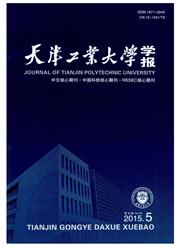

 中文摘要:
中文摘要:
针对用于1 100 k V特高压断路器中的高速大流量液压缸分闸缓冲制动效果不良这一问题,提出采用系统综合建模的方法,在建立缓冲流量连续方程和运动微分方程的基础上,综合考虑油液密度、动力黏度和体积弹性模量随系统状态的变化,并提出运用CFD(computational fluid dynamics)流场分析法判断缓冲不同阶段的过渡点,同时结合试验测试数据对活塞运动的位移、速度、缓冲压力等动态特性进行对比分析。发现理论计算结果与试验数据差异较大;经过修正的阀控液压缸模型得到的结果与试验基本一致,缓冲压力变化剧烈,其峰值压力高达107.0 MPa,缓冲末速度高达1.75 m/s,会对缓冲套和缸体造成严重的冲击。为有效提升缓冲效果,推导出理想缓冲过程的压力和速度变化规律,给出4种不同柱塞结构的间隙变化模型,并在考虑油液黏性阻尼和可压缩性的条件下,运用阀控缸系统的综合计算模型对不同结构柱塞在初始间隙取不同值时的缓冲效果进行对比分析。研究结果表明:在相同条件下,初始间隙为1.4 mm的圆锥型柱塞的缓冲效果最好,使缓冲峰值压力和末速度降低幅度均超过40%;考虑实际参数的动态变化特性后,理论上最优的抛物线型柱塞的缓冲效果不佳,活塞的末速度较高。
 英文摘要:
英文摘要:
In order to solve the bad cushion performance of high-speed and high-flow valve-controlled hydraulic cylinder used in 1100 kV ultra-high voltage circuit breaker, a method of comprehensive system simulation was put forward. This system simulation considered density, dynamic viscosity and bulk modulus changing with the status of the system and was based on the general flow continuity equation and motion differential equation. Furthermore, a method of flow field analysis using CFD (computational fluid dynamics) was adopted to distinguish transition point of cushion process in different stages. Compared with test data, the system simulation model was applied to analyze displacement, velocity and pressure features. The theoretical computational result shows a big difference from the test data while the modified hydraulic simulation model basically agrees with the test data. In addition, the tremendously changing pressure is up to 107.0 MPa and a high end speeds up to 1.75 m/s, which causes a great damage to the cushion collar and cylinder body. In order to improve the cushion performance, clearance changing models of four different type plungers were given based on the derivation of velocity and pressure changing rule for ideal cushion process. Different schemes were designed to study the cushion features of different plungers using the comprehensive system simulation model. The results show that conical cushion plunger of 1.4 mm initial clearance is the best scheme which reduces both the peaking pressure and end speed by more than 40% under the same conditions. The parabolic cushion plunger which is the best structure in theory, does not have the best performance in consideration of the dynamic changes of the actual parameter characteristics, and its end speed is high.
 同期刊论文项目
同期刊论文项目
 同项目期刊论文
同项目期刊论文
 期刊信息
期刊信息
